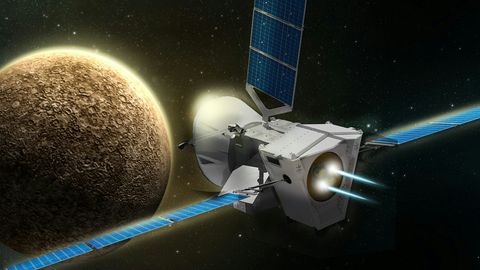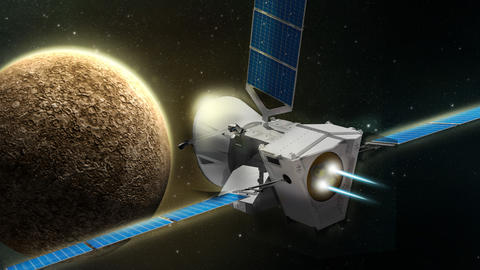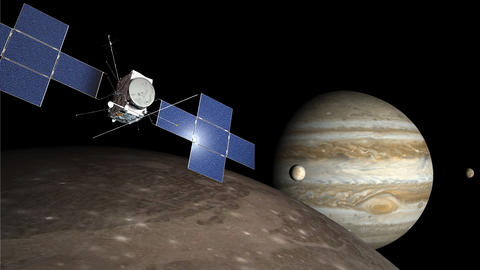BepiColombo - Mission to Mercury
Europe's first mission to Mercury – BepiColombo, which is named after Italian professor Giuseppe (Bepi) Colombo – began in October 2018 on a journey to the solar system’s smallest and least-explored terrestrial planet, with Airbus playing an important role in this deep space exploration mission.
As a joint effort between the European Space Agency (ESA) and the Japan Aerospace Exploration Agency (JAXA), BepiColombo will examine the peculiarities of Mercury´s internal structure and magnetic field generation, as well as how it interacts with the Sun and solar wind. It also will investigate surface features and chemistry, such as the ice in permanently-shadowed craters at the poles.
The mission's science will significantly improve humans’ understanding of the formation of the Solar System, plus the evolution of planets close to their parent stars. After arriving in late 2025, BepiColombo will have a nominal one-year duration, with the possibility for an extension.
Airbus’ involvement in BepiColombo also included the space probe’s launch, which was performed on 20 October 2018 from French Guiana with an Ariane 5 launcher, supplied by production prime contractor ArianeGroup – the joint venture of Airbus and Safran.
One mission, multiple components
BepiColombo consists of four elements: ESA’s Mercury Planetary Orbiter (MPO), a three-axis stabilised spacecraft tasked to study the planet’s surface and internal composition; JAXA’s spin-stabilised Mercury Magnetospheric Orbiter (MMO), which will provide data on Mercury’s magnetosphere; the Mercury Transfer Module (MTM), providing solar-electric propulsion on the trajectory to Mercury; and the MMO Sunshield and Interface Structure (MOSIF). Airbus is responsible for the systems design and building the MPO, MTM and MOSIF.
The ESA-built MTM, which uses solar-electric propulsion technology, is needed for the journey to Mercury. The two science orbiters will be captured in Mercury’s orbit, and the small thrusters on MPO will be used to deliver MMO into its orbit. There, MMO will be ejected from MPO and spun up. MPO will then discard the sunshield, and continue into its own orbit around Mercury.
Managing extreme heat in orbit
As it is only some 58 million kilometres from the Sun, Mercury presents a special challenge to visiting spacecraft. During the day, the planet’s surface exceeds temperatures of 350 deg. Celsius or more, which is hot enough to melt some metals. As a result, spacecraft in Mercury´s orbit not only have to cope with the immense heat of the Sun, but also with the infrared radiation emitted by the planet.
In consequence, the BepiColombo team has covered every external surface of ESA’s MPO, except for the single radiator side, with high-temperature, multi-layered insulation. The material, made up of 50 layers of ceramics and aluminium, was especially designed for the BepiColombo mission. The antennas are made of heat-resistant titanium, covered by a newly developed coating.
As the MPO’s mission is to investigate Mercury’s surface, one side will always be facing the planet, so that the instruments can monitor the surface at all times, while the radiator faces away from the planet into deep space to dissipate heat.


__________________________________________________________________________________________________________________________________________________________________________________
Latest BepiColombo news

Electric propulsion gives the “kick” to spacecraft in exploring new worlds






